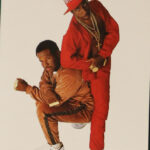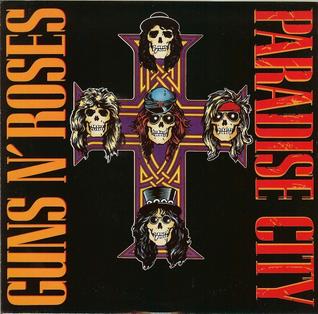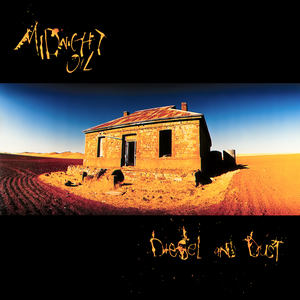 There are songs that define moments, and then there are songs that create them. “It Takes Two” by Rob Base and DJ E-Z Rock did the latter. Released in 1988, this electrifying hip-hop anthem didn’t just light up radio stations and dance floors—it helped lay the groundwork for an entire generation of crossover rap hits. From its unmistakable opening shout of “Woo! Yeah!” to its relentlessly funky beat, “It Takes Two” still sounds as fresh and alive as it did over three decades ago. This was a track that united b-boys, partygoers, and pop audiences under one command: dance.
There are songs that define moments, and then there are songs that create them. “It Takes Two” by Rob Base and DJ E-Z Rock did the latter. Released in 1988, this electrifying hip-hop anthem didn’t just light up radio stations and dance floors—it helped lay the groundwork for an entire generation of crossover rap hits. From its unmistakable opening shout of “Woo! Yeah!” to its relentlessly funky beat, “It Takes Two” still sounds as fresh and alive as it did over three decades ago. This was a track that united b-boys, partygoers, and pop audiences under one command: dance.
By the late ’80s, hip-hop was expanding beyond the Bronx, Brooklyn, and Compton into a national—and soon global—phenomenon. Artists like Run-D.M.C., LL Cool J, and the Beastie Boys had already proven that rap could dominate MTV and the Billboard charts. But Rob Base and DJ E-Z Rock brought something slightly different to the mix: fun. Their music was about energy, movement, and joy. “It Takes Two” wasn’t born from anger or social commentary—it was born from the desire to make the crowd move. Its simplicity was its superpower, its infectious rhythm its engine. And while many hip-hop classics rely on lyrical complexity or political weight, this song’s genius lies in its beat and charisma.
“It Takes Two” captured the perfect balance between old-school party rap and the coming era of mainstream hip-hop. It bridged the underground and the radio, blending James Brown funk with golden-age rhymes, and it did so with a confidence that shouted, “We belong here.” That’s what made it timeless.
The Spark of 1988
When “It Takes Two” dropped in 1988, hip-hop was at a creative crossroads. The genre had exploded during the early part of the decade but was still searching for its long-term identity. Sampling was becoming more advanced, DJs were experimenting with layered beats, and rappers were developing stronger rhythmic precision. Amid all that evolution came Rob Base (Robert Ginyard) and DJ E-Z Rock (Rodney Bryce), two friends from Harlem who wanted to make something that sounded like pure fun—something that would hit the clubs as hard as it hit the streets.
They recorded the song under Profile Records, and within months, “It Takes Two” went from a regional favorite in New York clubs to an international smash. The track’s instantly recognizable sample—taken from Lyn Collins’ 1972 James Brown-produced song “Think (About It)”—gave it a groove that felt both nostalgic and futuristic. That “Woo! Yeah!” breakbeat, chopped and looped by producer Teddy Riley (the architect of the new jack swing sound), became one of the most iconic samples in hip-hop history.
It was impossible to sit still when “It Takes Two” hit the speakers. The song was a rhythmic explosion that embodied hip-hop’s raw energy and its newfound polish.
Simplicity as Perfection
One of the most fascinating aspects of “It Takes Two” is its minimalism. The beat isn’t overly complicated. The lyrics aren’t dense. But every single element is right where it should be.
Rob Base’s delivery is confident and crystal clear, his voice cutting through the mix with swagger and enthusiasm. His rhymes—“I wanna rock right now, I’m Rob Base and I came to get down”—are deceptively simple, but they serve a vital purpose. They’re chants, hooks, and affirmations all at once. You don’t just listen to them—you shout them back. That call-and-response energy is what transformed the song from a track into an experience.
E-Z Rock’s presence, meanwhile, grounds the whole thing. His DJ cuts and rhythmic scratches punctuate Rob Base’s verses like exclamation marks, constantly reminding listeners that this is hip-hop in its purest form: an MC and a DJ, locked in perfect sync.
The repetition of the line “It takes two to make a thing go right” is the heartbeat of the track. It’s hypnotic. It’s infectious. It’s a mantra about chemistry—between DJ and rapper, between rhythm and rhyme, between artist and crowd.
The Power of the Sample
Sampling has always been central to hip-hop, and “It Takes Two” is a masterclass in how a single loop can change music history. The core of the track comes from Lyn Collins’ “Think (About It),” a funk record produced by James Brown that was already a DJ favorite for its breakbeat. Teddy Riley took that iconic “Woo! Yeah!” section and transformed it into something entirely new.
Where the original was loose and soulful, the “It Takes Two” version is tight, crisp, and endlessly propulsive. Riley didn’t just loop it—he weaponized it, making it feel like an unstoppable machine of funk and rhythm.
That sample has since been used, borrowed, and reimagined in countless songs—from Snoop Dogg’s “Ain’t No Fun” to the Black Eyed Peas’ “Rock That Body.” It became one of the most instantly recognizable beats in pop culture, and much of that credit goes to how perfectly it was utilized here.
The Voice That Brought the Party
Rob Base’s performance is central to the song’s power. His voice is commanding yet playful, with a flow that straddles the line between rap and chant. He doesn’t waste a single bar on filler or posturing. Every line is delivered with purpose and charisma.
Lines like “I’m not internationally known / But I’m known to rock the microphone” became rallying cries for aspiring MCs everywhere. It’s confident without arrogance, fun without foolishness. Rob Base wasn’t trying to out-rap Rakim or tell a story like Slick Rick—he was trying to make people move.
That authenticity connected with listeners across genres. “It Takes Two” didn’t need to prove its credibility because it felt credible. It wasn’t pretending to be street or commercial—it was just good music.
Crossing Over Without Selling Out
“It Takes Two” did something few hip-hop songs managed in the 1980s: it crossed over into the mainstream without alienating its core audience. It reached No. 36 on the Billboard Hot 100 and went platinum, an almost unheard-of feat for a rap single at the time.
Part of that success came from the song’s universal appeal. You didn’t have to be a hip-hop head to love it. DJs spun it at weddings, house parties, nightclubs, and even skating rinks. It was one of those rare songs that made everyone feel like they were part of something bigger—a communal celebration of rhythm.
The music video also helped propel its popularity. Featuring Rob Base and E-Z Rock performing in energetic, fast-cut sequences with a mix of street and club imagery, the visual captured hip-hop’s essence right before the genre exploded into global dominance.
Influence on the Golden Age of Hip-Hop
“It Takes Two” arrived just as hip-hop was entering what would later be known as its Golden Age (roughly 1986–1993). It influenced a wave of artists who understood that rap could be both hardcore and commercial, both funky and accessible. You can hear its DNA in early 1990s hits like House of Pain’s “Jump Around” or Heavy D & the Boyz’s “Now That We Found Love.”
It also helped establish the idea that hip-hop didn’t have to abandon fun to maintain authenticity. At a time when the genre was beginning to splinter into different subcultures—gangsta rap, conscious rap, new jack swing—“It Takes Two” stood proudly in the middle, bridging the gap. It was playful, but not bubblegum; rhythmic, but not soft.
Artists like Will Smith, MC Hammer, and Tone Lōc would soon follow the path Rob Base and E-Z Rock paved, crafting hits that could dominate radio while staying rooted in hip-hop tradition.
Legacy and Longevity
More than three decades later, “It Takes Two” has lost none of its power. It remains one of the most sampled, referenced, and replayed songs in hip-hop history. You’ll hear it at sporting events, clubs, movie soundtracks, and commercials. It’s been featured in Space Jam, The Proposal, Sisters, Iron Man 2, and countless TV spots.
Its influence extends beyond music. The phrase “It takes two” has become shorthand for teamwork, chemistry, and collaboration—concepts that transcend genres and generations.
Rob Base and DJ E-Z Rock’s partnership also embodies that message. Though E-Z Rock tragically passed away in 2014, the song stands as an eternal tribute to their creative unity. It’s fitting that a song built on the idea of “two” became their signature—proof that music magic often happens in pairs.
Cultural Recognition
Over the years, critics and fans alike have come to view “It Takes Two” as a cornerstone of hip-hop’s early commercial evolution. Rolling Stone placed it among the 500 Greatest Songs of All Time. VH1 ranked it as one of the greatest hip-hop songs ever recorded. Even after decades of innovation, the track still feels like the blueprint for how to make a perfect rap single: one part infectious rhythm, one part confident MC, and one part undeniable hook.
What’s remarkable is how unforced it all feels. “It Takes Two” doesn’t sound engineered for success—it sounds like two friends making the best possible party record they could. That spontaneity, that purity, is what gives it eternal life.
The Eternal Dancefloor
Ask any DJ: when you play “It Takes Two,” people move. It doesn’t matter the age, the city, or the setting. The beat drops, and the crowd reacts instinctively. That’s the magic of the song—it taps into something primal.
It’s the rhythm of confidence, of unity, of joy. It’s not angry or boastful—it’s celebratory. In a musical landscape often divided by identity and message, “It Takes Two” reminds us that sometimes the simplest idea—working together to create something beautiful—is the most powerful.
Conclusion: The Groove That Never Stops
When Rob Base and DJ E-Z Rock released “It Takes Two” in 1988, they probably couldn’t have imagined that it would become one of hip-hop’s defining records. But that’s exactly what happened. With its legendary sample, irresistible beat, and unforgettable vocal charisma, it redefined what a hip-hop hit could be.
The song’s message is right there in its title—it takes two. Two artists in perfect sync. Two halves of a groove that never stops. Two decades? Try four. “It Takes Two” still rocks, still moves, still unites. It’s not just a song—it’s a celebration of partnership, rhythm, and the eternal power of a good beat.
Whether you’re on the dance floor, behind the decks, or just vibing with headphones on, one truth remains: it still takes two to make a thing go right. And Rob Base and DJ E-Z Rock got it so right.


